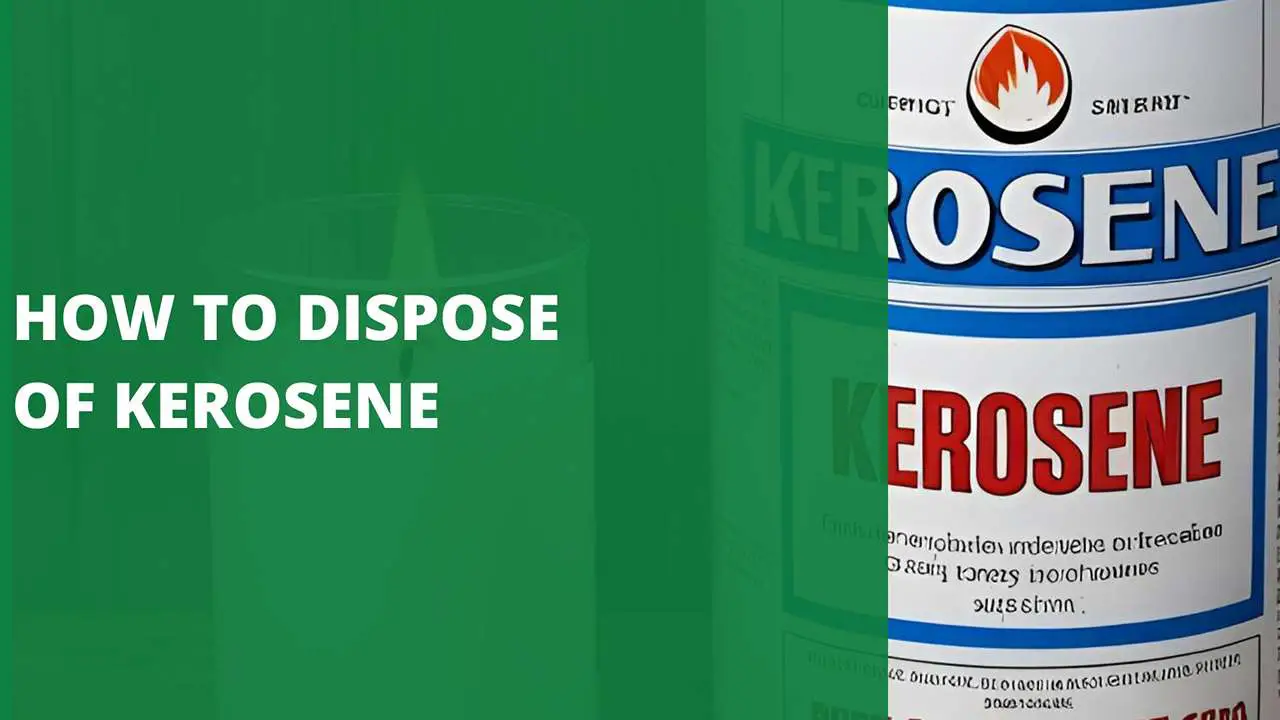Kerosene is a flammable substance and can be harmful to the environment if not disposed of properly. Flushing it down the toilet or disposing of it in the trash can result in water pollution, soil contamination and even damage to plumbing.
In this article, we’ll discuss the safest and most environmentally friendly ways to dispose of kerosene.
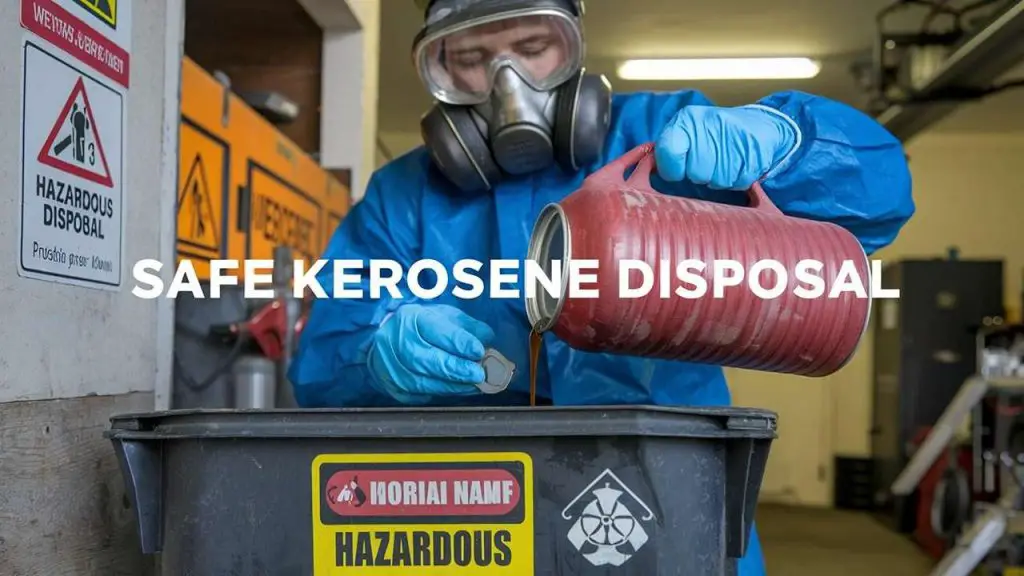
1. Understanding Kerosene Safety
1.1 Properties of kerosene
Kerosene is a petroleum derived fuel characterized by its versatility and unique properties.
- Composition: Kerosene is a mixture of aliphatic and aromatic hydrocarbons.
- Grade: 1-K kerosene the grade recommended for use in heaters.
- Flammability: It’s extremely flammable so it can be effective for heating but also dangerous.
- Volatility: Kerosene can evaporate at room temp putting off fumes.
1.2 Potential hazards
Knowing the dangers relating to kerosene is vital for your wellbeing
- Fire and explosion: Inadequate use or storage can cause fires or explosions.
- Burns: Even brief skin contact can trigger painful burns.
- Asphyxiation: Kerosene can decrease oxygen in poorly ventilated spaces.
- Indoor air pollution: Carbon monoxide (CO) Nitrogen dioxide (NO2) Sulfur dioxide (SO2)Indoor air pollution
| Hazard | Potential Consequences |
| Fire | Property damage, injuries |
| Fumes | Respiratory issues, headaches, dizziness |
| Spills | Soil contamination, fire risk |
1.3 Proper storage methods
Understanding the risks associated with kerosene is crucial for your safety
- Only use containers that are specifically labelled for kerosene.
- Store kerosene in a cool, well-ventilated space away from the living area
- Close containers tightly to prevent evaporation and spills.
- Keep away from heat and flammable materials.
- If you have pets or small children make sure your storage areas are out of reach.
- Containers must be inspected periodically for leaks or damage.
Knowing kerosene’s properties its potential hazards and how you should store it will better equip you to handle this fuel safely.
Now, let us move on to the most important step assessing disposal options so that you can dispose of kerosene responsibly and within the environmental guidelines.
2. Evaluating Disposal Options
It’s also important to evaluate disposal options to make sure you are abiding by regulations and not harming the environment.
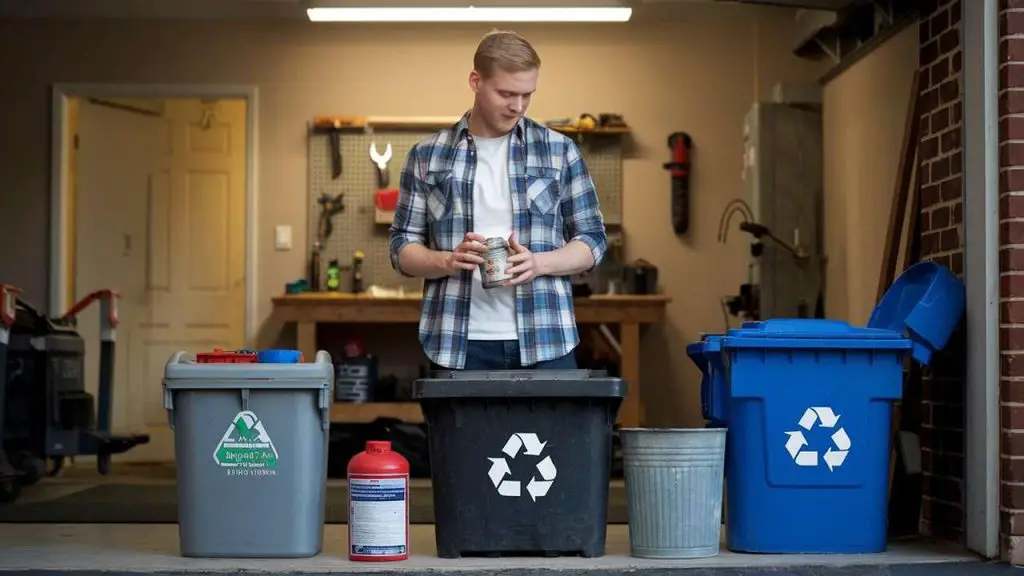
2.1 Localized laws and recommendations
Before dropping off any kerosene, ensure that you check your location’s rules and regulations. These can differ widely based on where you are. To stay informed
- Check with your local waste management authorities for options in your area.
- Visit a webpage or a local information website about hazardous waste disposal.
- It should be noted that kerosene is hazardous waste and must be handled accordingly.
2.2 Recycling centers
Kerosene which you can bring to a recycling center for proper disposal. Here’s what you need to know:
- Use tools like the Earth911 Recycling Search to locate nearby facilities
- If you do need to move kerosene, do your best to keep it in its original, labeled container.
- Some recycling centers charge a small fee for disposal.
2.3 Household hazardous waste collection events
Many communities provide seasonal or year round collection events for household hazardous waste (HHW). These events are great chances to dispose of kerosene in a safe manner:
- Visit your local government website to find information on upcoming HHW collection events
- Some rural areas might have seasonal collection events while cities might have facilities available year round.
- Bring your kerosene to these events in a sealed, labelled container
2.4 Professional disposal services
For larger amounts or if no other options are available, professional disposal services provide a dependable option.
Some of the top professional disposal services include Waste Management Inc., Republic Services, Clean Harbors. If you need assistance you can contact them or search online for services near your area.
| Service Type | Benefits | Considerations |
| Fuel Reclamation | Environmentally friendly | May be more expensive |
| Hazardous Waste Companies | Expertise in handling | Might require minimum quantities |
| Auto Shops/Gas Stations | Convenient | May only accept small amounts |
3. Preparing Kerosene for Disposal
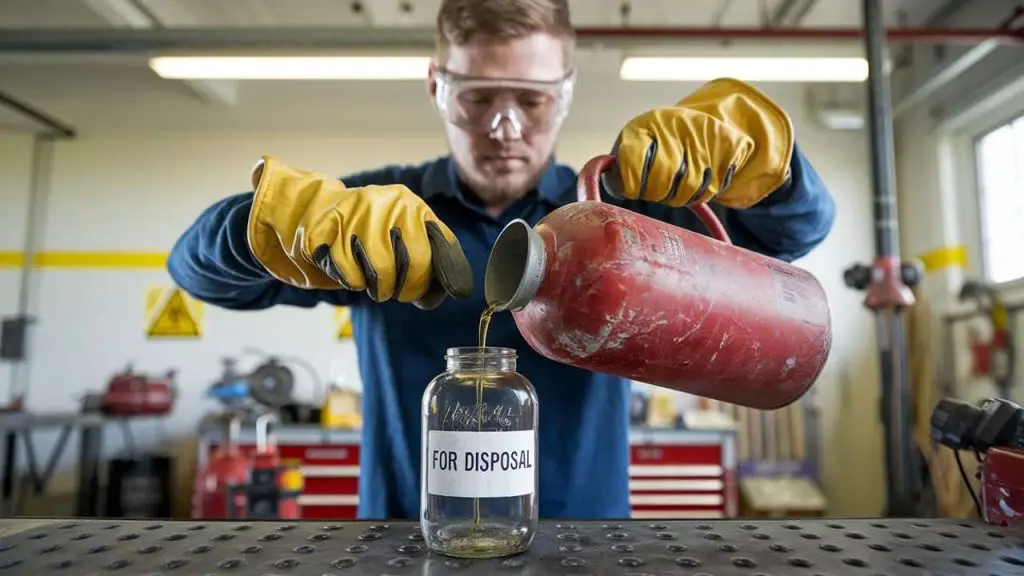
Having determined how to dispose of kerosene, it is now time to get it ready for safe disposal. The biggest step involves the handling of the fuel and ensuring that environmental consequences are minimal.
3.1 Gathering necessary materials
Before starting, gather the following items
- Permitted containers for kerosene storage
- Funnel for easy transfer
- Universal absorbents (e.g., kitty litter or rags)
- Personal Protective Equipment (PPE): Gloves made from nitrile, neoprene, or PVC, goggles
- Labels and permanent markers
3.2 Transferring kerosene to appropriate containers
When transferring kerosene follow these steps
- Use in a well-ventilated area, place far from heat.
- Put on your protective gear.
- Using a funnel, pour the kerosene into approved containers.
- For smaller amounts, soak up the kerosene with kitty litter or rags.
- Try to close the containers tightly so that spills or leaks do not happen.
| Container Type | Suitable for Kerosene | Maximum Storage Time |
| Approved metal can | Yes | 3 months |
| Plastic jerry can | Yes | 3 months |
| Glass containers | No | N/A |
3.3 Labeling containers correctly
- Use clear, waterproof labels.
- On it in large letters: “KEROSENE — HAZARDOUS WASTE.”
- Note the transfer date to establish storage duration.
- Include any local disposal instructions as provided by your waste management authority.
Just remember You should never store kerosene for more than three months as it can break down and develop into a breeding ground for dangerous organisms. If you have kerosene that’s been stored longer, be sure to dispose of it as soon as possible using proper means.
Now that you have your kerosene safely contained and labeled, it’s time to move on to the next most important step, safe handling techniques. This will ensure you protect yourself and the planet while disposing of it.
4. Safe Handling Techniques
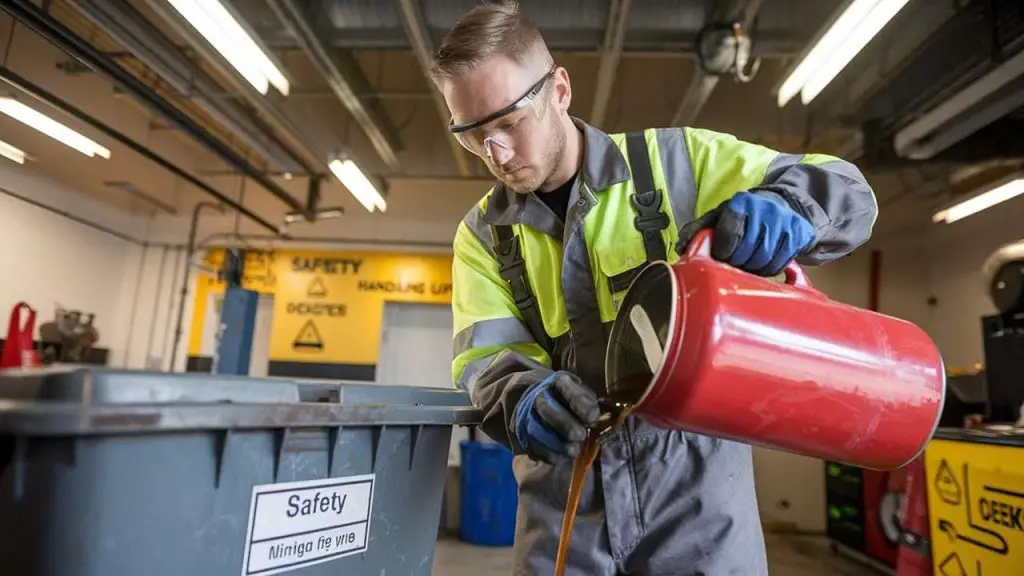
To keep yourself and others safe and also to ensure the safe disposal of hazardous items.
4.1 Personal protective equipment
Due to kerosene being a Class II or III combustible liquid, the appropriate protection is imperative to minimize the risk of both handling kerosene. Remember your safety comes first and wear appropriate PPE. Here’s what you need
- Safety goggles to shield your eyes from splashes
- Nitrile, neoprene or PVC chemical-resistant gloves, so that skin is not exposed
- Protective clothing such as long-sleeved clothing and closed toe shoes
4.2 Safe techniques for lifting and transporting items
- Assess the weight of the container before attempting to lift it
- Use your legs, not your back, when lifting
- Keep the container close to your body while carrying
- Avoid twisting your body; instead, turn your whole body when changing direction
For larger quantities consider using a hand truck or dolly to move containers safely.
4.3 Avoiding spills and leaks
Preventing spills and leaks is crucial for safe kerosene handling. Here are some best practices to adopt
| Practice | Description |
| Use approved containers | Store kerosene in containers designed for flammable liquids, such as Type I or Type II safety cans |
| Check for damage | Regularly inspect containers for signs of wear, corrosion, or damage |
| Secure lids and caps | Ensure all container openings are tightly sealed before moving |
| Use secondary containment | Place containers in spill trays or containment areas to catch potential leaks |
| Handle with care | Avoid rough handling or dropping containers to prevent damage |
These will help minimize the risk of accidents or spills when disposing of kerosene. Always adhere to manufacturer guidelines and local laws related to kerosene usage and storage.
5. Sustainable Waste Disposal Methods
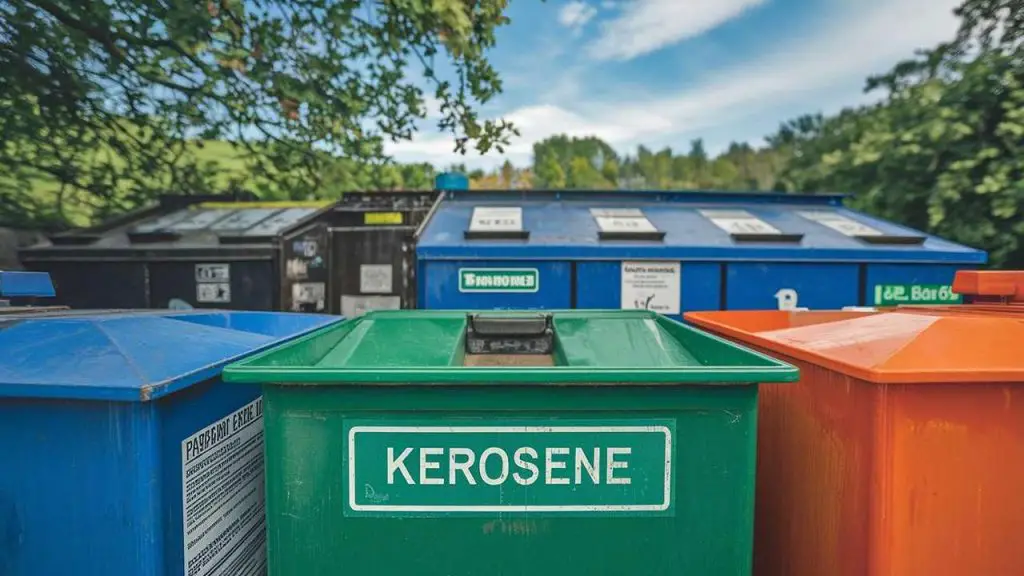
Now, let’s talk about some eco-friendly disposal methods that can help you keep our ecosystem less affected.
5.1 Fuel blending programs
One of the most effective ways to dispose of kerosene in an eco-friendly manner is through fuel blending programs. These programs are often available at local waste management facilities or recycling centers.
Participating in these programs you can ensure that your unused or contaminated kerosene is properly processed and repurposed.
Benefits of Fuel Blending Programs
- Reduces environmental impact
- Legal Info You Must Follow
- To encourage conservation of resources
- Minimizes hazardous waste
For related fuels, explore Dispose of Motor Oil in 6 Easy Steps or How to Dispose of Gasoline [6 Best Ways] for eco-friendly options and safe handling.
5.2 Using as a weed killer
If you want to get rid of a small quantity of kerosene you may want to use the utility weeder. But you need to be careful and check off these things
- Used lightly it won’t contaminate soil
- Use only outdoors or in a well-ventilated area
- Avoid water resources and drainage system
- Wear protective gear such as gloves and a mask
This method should only be used as a last resort and for small amounts of kerosene.
5.3 Giving to relevant organizations
For kerosene that is still usable, donation can be a great way to dispose of it. Many local charities, community centers and churches will accept fuel donations to assist those who need it. Before donating, ensure that
- It is verified to be uncontaminated kerosene and is usable
- You reach out to the organization ahead of time to confirm that they take fuel donations
- You carry the kerosene in its original, labelled container
- You explain what the fuel is and any additional details needed about its age and condition
If you donate your unused kerosene, you can get 2 birds with one stone. You can responsibly dispose of your kerosene and help out your community.
Unless you use these eco-friendly disposal methods, it is good to know what not to do when disposing of kerosene.
6. Things You Should Not Do if You Are Getting Rid of Kerosene
6.1 Do not discharge into drains or sewers
Indeed one should never pour kerosene into drains or sewer systems. This can pollute water supplies and damage ecosystems. Do not dispose of them in general waste instead, take them to approved hazardous waste collection facilities.
6.2 Always dispose of kerosene by burning
Incinerating kerosene for disposal is highly unsafe and may even be illegal. It produces toxic fumes and is a fire hazard. Safe disposal through authorized means should always be your first choice.
6.3 Not mix with other chemicals
Kerosene can react dangerously with other chemicals. Do not mix it with other substances and dispose of it in its pure form through the authorised bodies.
6.4 Do not bury containers
Improper storage of kerosene containers can pollute soil and groundwater as well. Always dispose of both fuel and containers in designated disposal facilities.
| Incorrect Disposal Method | Potential Consequences |
| Pouring down drains | Water contamination |
| Burning | Air pollution, fire |
| Mixing with chemicals | Dangerous reactions |
| Burying containers | Soil contamination |
With those safety considerations in mind, let’s now get into what you need to do as soon as you handle kerosene the cleanup and decontamination questions.
7. Clean-up and Decontamination
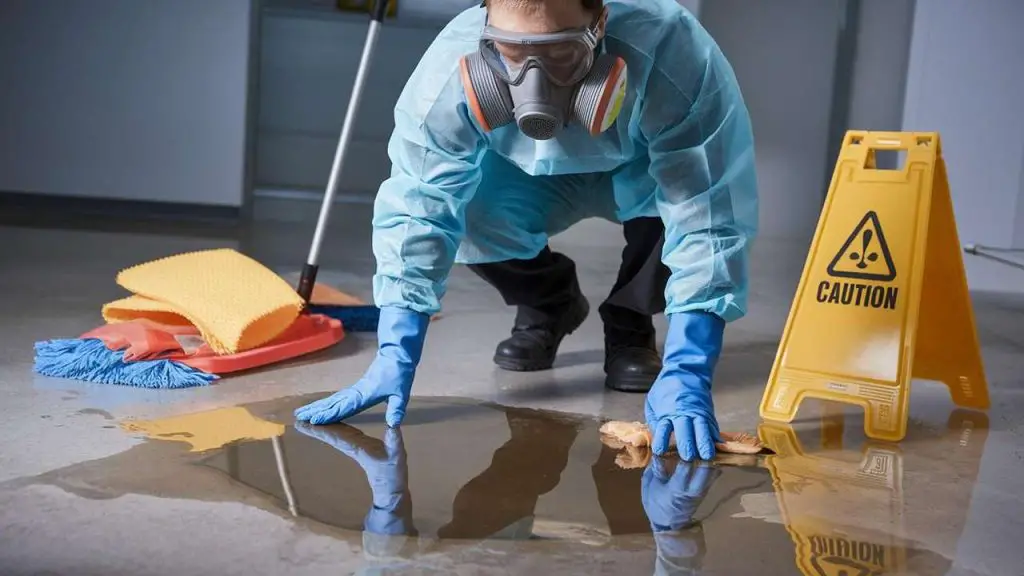
When dealing with small spills, you’ll need to be fast. Sprinkle cat litter on the spill to soak up the kerosene and then sweep it into a dustpan and throw it in a trash bag.
Clean with heavy duty detergent, scrub with a nylon brush, and absorb residue with rags. Remember to safely dispose of the contaminated materials according to local hazardous waste disposal guidelines.
7.1 Handling small spills
- Spread cat litter over the spill
- Use a dustpan to sweep saturated litter
- Dispose of in a trash bag
- Repeat if necessary
7.2 Proper cleaning techniques
| Step | Action |
| 1 | Apply heavy-duty detergent powder |
| 2 | Let sit for 5-10 minutes |
| 3 | Scrub with nylon brush and hot water |
| 4 | Absorb residue with cloths |
7.3 Disposing of contaminated materials
- Follow local regulations for hazardous waste disposal.
- Do not rinse fresh spills with water to avoid drainage issues.
- Use activated charcoal to neutralize lingering odors.
Conclusion
It is important that kerosene be disposed of properly to minimize any negative effects to the environment and to the general population. By following the guidelines outlined in this post, you can safely handle and dispose of kerosene while minimizing potential risks.

